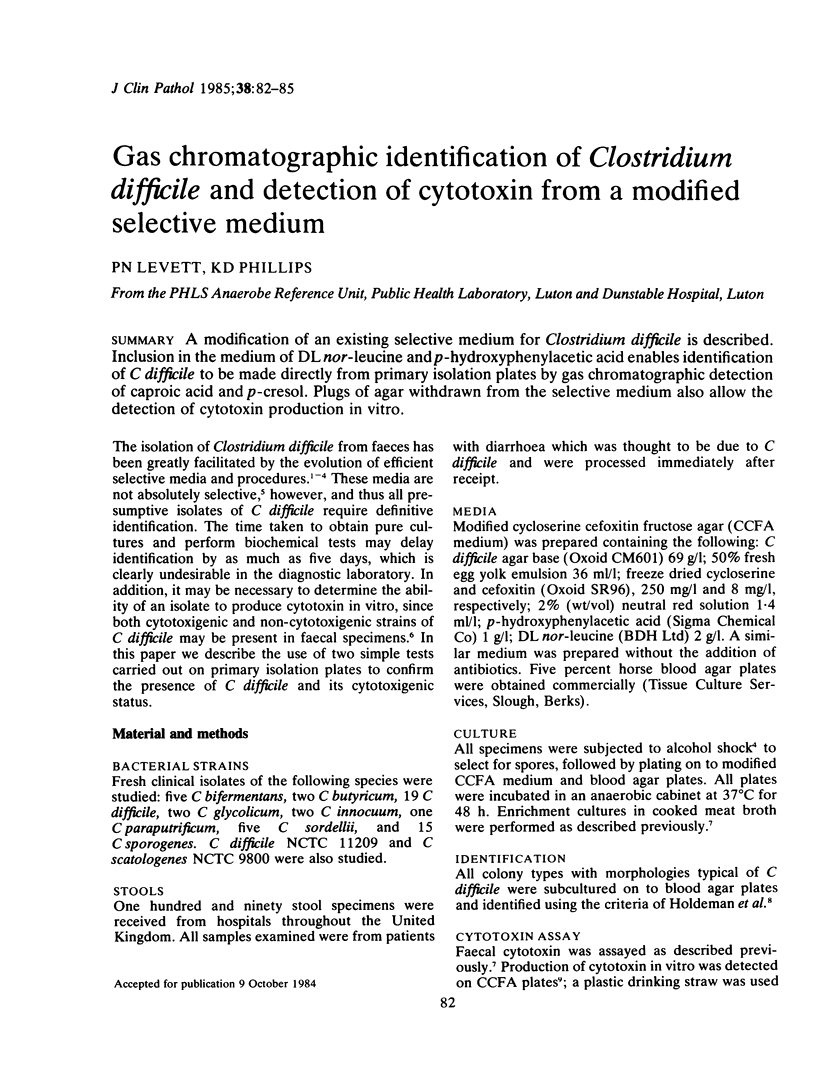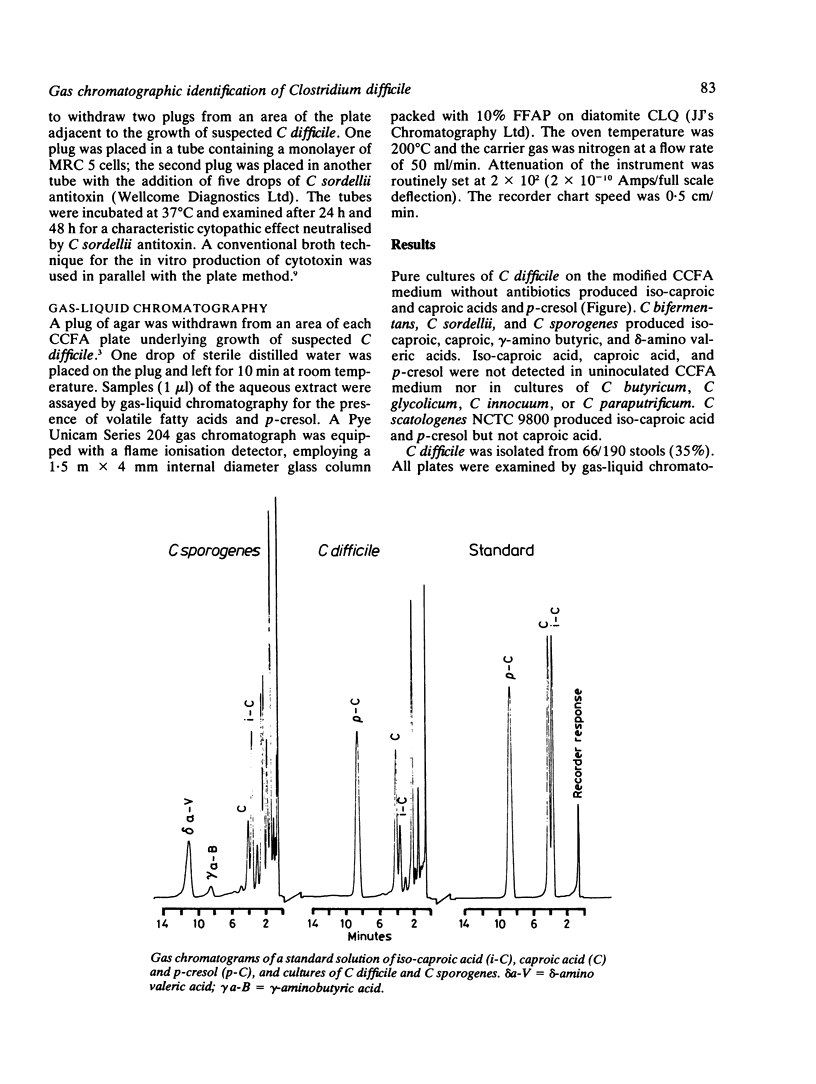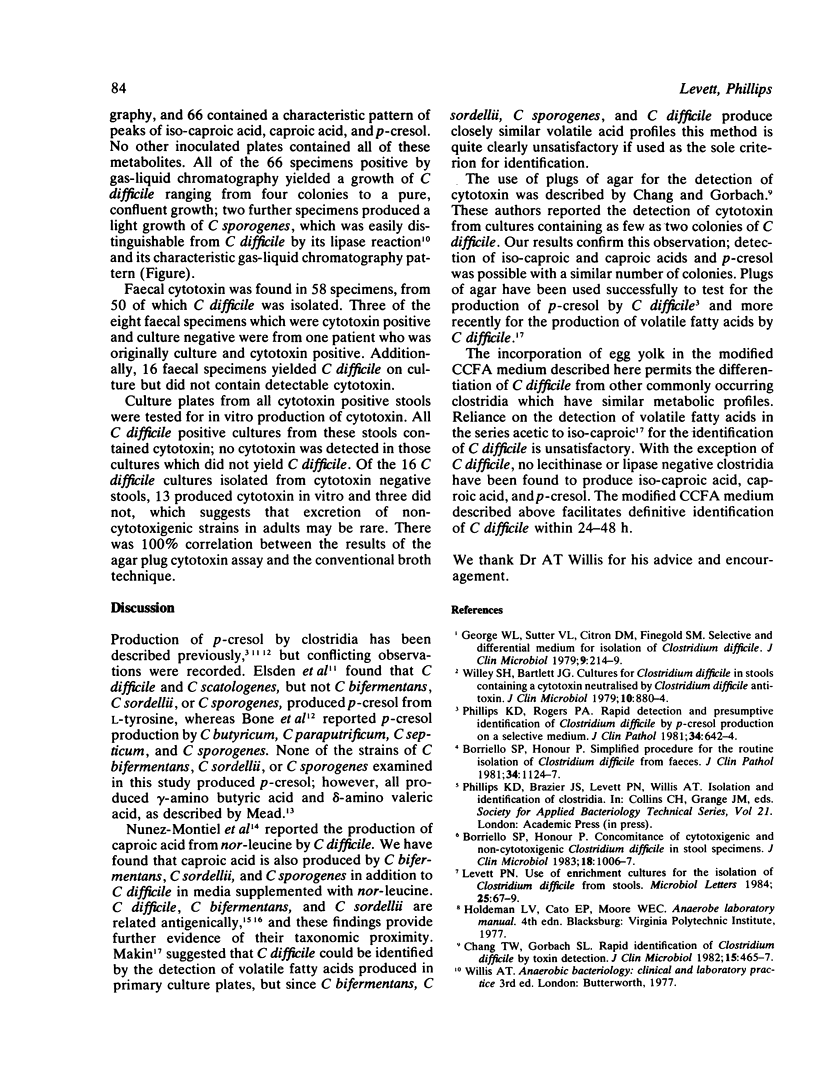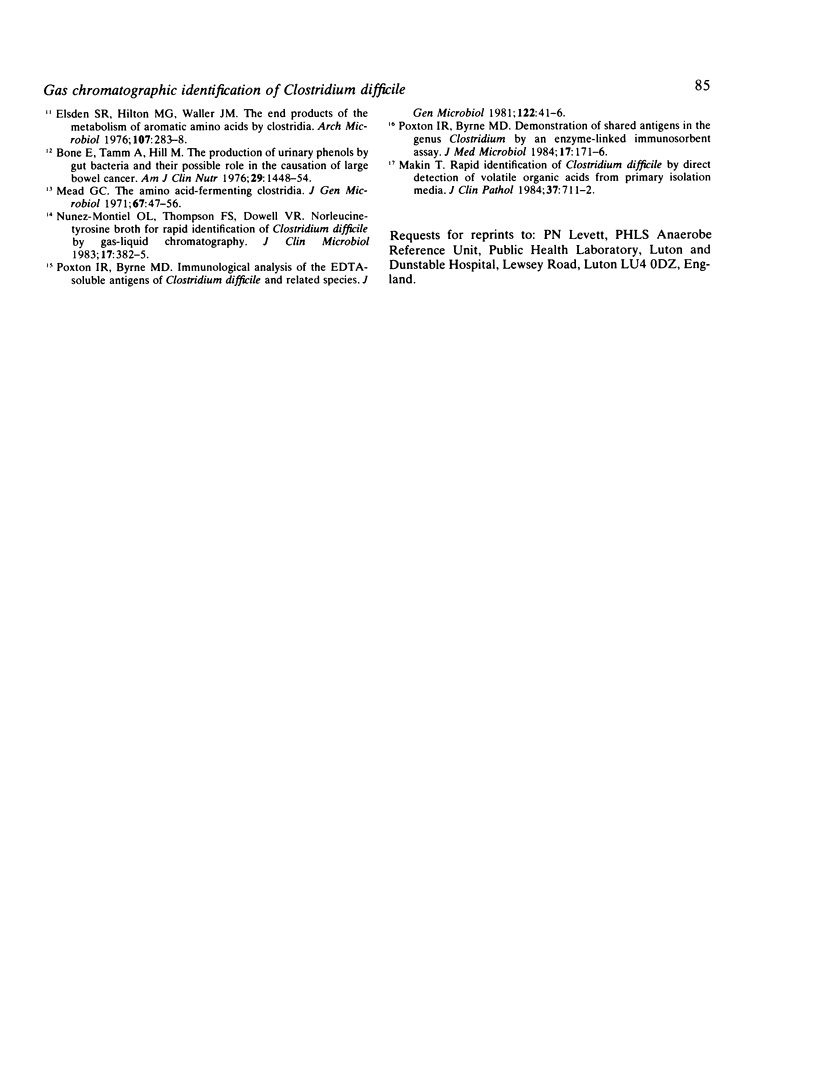Abstract
A modification of an existing selective medium for Clostridium difficile is described. Inclusion in the medium of DL nor-leucine and p-hydroxyphenylacetic acid enables identification of C difficile to be made directly from primary isolation plates by gas chromatographic detection of caproic acid and p-cresol. Plugs of agar withdrawn from the selective medium also allow the detection of cytotoxin production in vitro.
Full text
PDF



Selected References
These references are in PubMed. This may not be the complete list of references from this article.
- Bone E., Tamm A., Hill M. The production of urinary phenols by gut bacteria and their possible role in the causation of large bowel cancer. Am J Clin Nutr. 1976 Dec;29(12):1448–1454. doi: 10.1093/ajcn/29.12.1448. [DOI] [PubMed] [Google Scholar]
- Borriello S. P., Honour P. Concomitance of cytotoxigenic and non-cytotoxigenic Clostridium difficile in stool specimens. J Clin Microbiol. 1983 Oct;18(4):1006–1007. doi: 10.1128/jcm.18.4.1006-1007.1983. [DOI] [PMC free article] [PubMed] [Google Scholar]
- Borriello S. P., Honour P. Simplified procedure for the routine isolation of Clostridium difficile from faeces. J Clin Pathol. 1981 Oct;34(10):1124–1127. doi: 10.1136/jcp.34.10.1124. [DOI] [PMC free article] [PubMed] [Google Scholar]
- Chang T. W., Gorbach S. L. Rapid identification of Clostridium difficile by toxin detection. J Clin Microbiol. 1982 Mar;15(3):465–467. doi: 10.1128/jcm.15.3.465-467.1982. [DOI] [PMC free article] [PubMed] [Google Scholar]
- Elsden S. R., Hilton M. G., Waller J. M. The end products of the metabolism of aromatic amino acids by Clostridia. Arch Microbiol. 1976 Apr 1;107(3):283–288. doi: 10.1007/BF00425340. [DOI] [PubMed] [Google Scholar]
- George W. L., Sutter V. L., Citron D., Finegold S. M. Selective and differential medium for isolation of Clostridium difficile. J Clin Microbiol. 1979 Feb;9(2):214–219. doi: 10.1128/jcm.9.2.214-219.1979. [DOI] [PMC free article] [PubMed] [Google Scholar]
- Makin T. Rapid identification of Clostridium difficile by direct detection of volatile organic acids from primary isolation media. J Clin Pathol. 1984 Jun;37(6):711–712. doi: 10.1136/jcp.37.6.711. [DOI] [PMC free article] [PubMed] [Google Scholar]
- Mead G. C. The amino acid-fermenting clostridia. J Gen Microbiol. 1971 Jul;67(1):47–56. doi: 10.1099/00221287-67-1-47. [DOI] [PubMed] [Google Scholar]
- Nunez-Montiel O. L., Thompson F. S., Dowell V. R., Jr Norleucine-tyrosine broth for rapid identification of Clostridium difficile by gas-liquid chromatography. J Clin Microbiol. 1983 Feb;17(2):382–385. doi: 10.1128/jcm.17.2.382-385.1983. [DOI] [PMC free article] [PubMed] [Google Scholar]
- Phillips K. D., Rogers P. A. Rapid detection and presumptive identification of Clostridium difficile by p-cresol production on a selective medium. J Clin Pathol. 1981 Jun;34(6):642–644. doi: 10.1136/jcp.34.6.642. [DOI] [PMC free article] [PubMed] [Google Scholar]
- Poxton I. R., Byrne M. D. Demonstration of shared antigens in the genus Clostridium by an enzyme-linked immunosorbent assay. J Med Microbiol. 1984 Apr;17(2):171–176. doi: 10.1099/00222615-17-2-171. [DOI] [PubMed] [Google Scholar]
- Poxton I. R., Byrne M. D. Immunological analysis of the EDTA-soluble antigens of Clostridium difficile and related species. J Gen Microbiol. 1981 Jan;122(1):41–46. doi: 10.1099/00221287-122-1-41. [DOI] [PubMed] [Google Scholar]
- Willey S. H., Bartlett J. G. Cultures for Clostridium difficile in stools containing a cytotoxin neutralized by Clostridium sordellii antitoxin. J Clin Microbiol. 1979 Dec;10(6):880–884. doi: 10.1128/jcm.10.6.880-884.1979. [DOI] [PMC free article] [PubMed] [Google Scholar]


